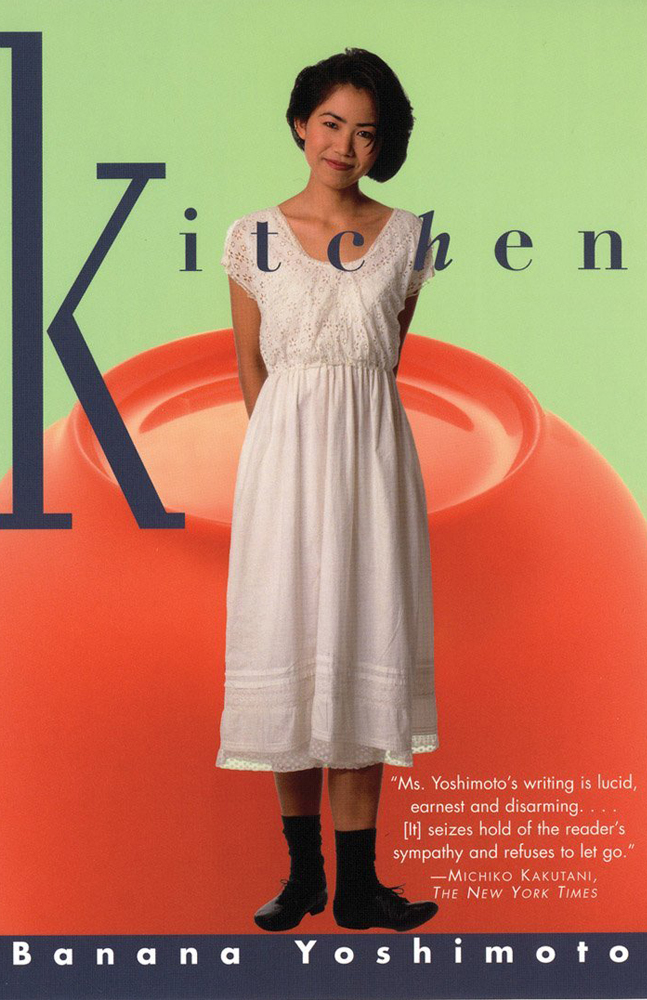“Kitchen” by Banana Yoshimoto is a story that feels both dreamy and stark, hopeful yet bleak. It follows Mikage Sakurai, a young woman who has just lost her grandmother, and her journey through grief and healing.
One of the most striking aspects of the book is its use of light and dark imagery. Yoshimoto deftly shows that healing isn’t a straightforward path; it’s a winding journey with moments of both brightness and shadow. Mikage’s courage shines through the glimmering stars during her darkest times, making her struggle and resilience deeply relatable.
The imagery of water also plays a significant role in the narrative, particularly in relation to Mikage and Yuichi, the young man who invites her to stay with him and his mother after her grandmother’s death. The “river of light” and the “waterfall” symbolize their fluid, evolving emotions and the ebb and flow of their grief. These images portray the connection between Mikage and Yuichi seamlessly, suggesting that their shared experiences are both a source of solace and a reminder of their individual losses.

Mikage’s connection to kitchens is another beautifully crafted element of the story. Kitchens are her sanctuary, a place where she finds comfort and stability. This attachment reveals her personality – her need for routine, her search for warmth in a cold world, and her way of processing her emotions. The kitchen becomes a metaphor for her internal state, reflecting both her chaos and her calm.
The bond between Mikage and Yuichi is one of the critical junctures of the story. Their relationship develops slowly, built on mutual understanding and shared grief. It’s not a typical romance but rather a deep, platonic connection that helps both of them navigate their sorrow. This nuanced depiction of their relationship adds layers to the narrative, making their bond feel real and deeply moving.
Grief in “Kitchen” is presented in various forms, reflecting the diverse ways people cope with loss. Mikage’s immersion in cooking, Yuichi’s quiet sadness, and Eriko’s strength and warmth all portray different facets of dealing with death. Yoshimoto captures the raw, stark pain of loss and the slow, often nonlinear process of healing with remarkable sensitivity.
The symbolism of moons is another recurring motif in the book. The moon often represents change, cycles, and the passage of time – all themes that resonate throughout Mikage’s journey. Just like the phases of the moon, her healing process waxes and wanes, highlighting the cyclical nature of grief and recovery.
“Kitchen” is a story that lingers long after the last page. It’s a testament to Yoshimoto’s skill that such a simple plot can feel so rich and textured. The pacing might seem slow if viewed from a distance, but in the moment, it’s perfectly measured. Every detail feels essential, every moment resonant. The quotes are stunning – I found myself circling so many words, savoring Yoshimoto’s lyrical prose.
The book touched me to the very core. The depiction of Mikage’s pain is so raw and believable, especially as she navigates her thoughts and emotions. The healing process isn’t rushed; it takes time for Mikage to take even the smallest steps forward, making her journey incredibly realistic. And I appreciated that the story didn’t tie everything up neatly at the end. Instead, it offered a glimpse into Mikage’s future, leaving the rest to the reader’s imagination. This open-ended conclusion felt authentic and true to life.
In conclusion, “Kitchen” by Banana Yoshimoto is a profoundly moving book that captures the essence of grief and the slow, often painful path to healing. Its use of imagery, symbolism, and deep character connections makes it a standout read. I was thoroughly captivated by every page, finding beauty in its quiet moments and solace in its emotional depth.